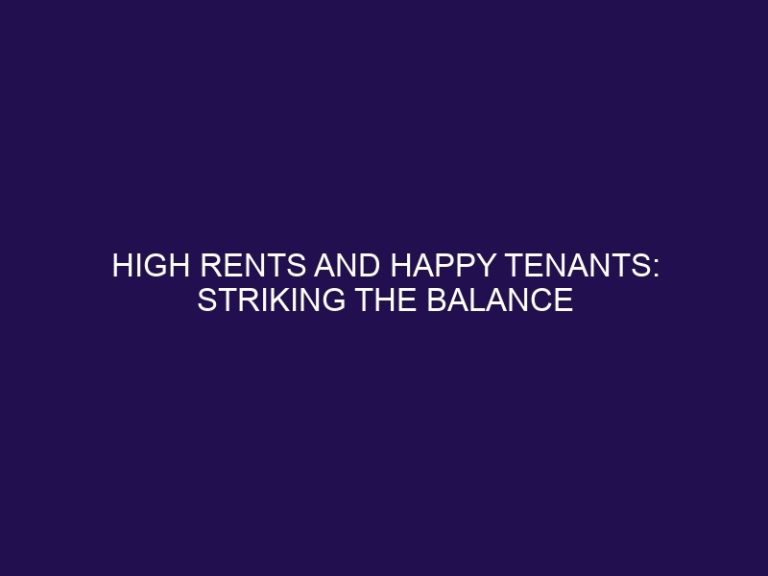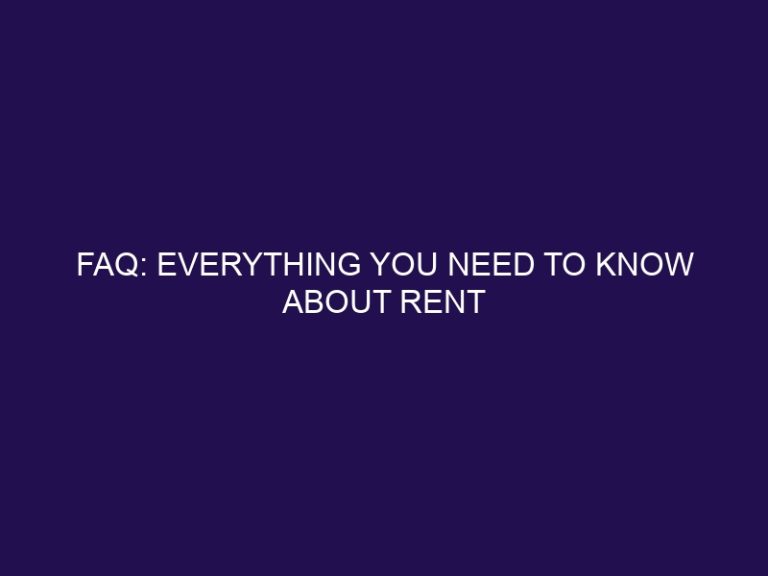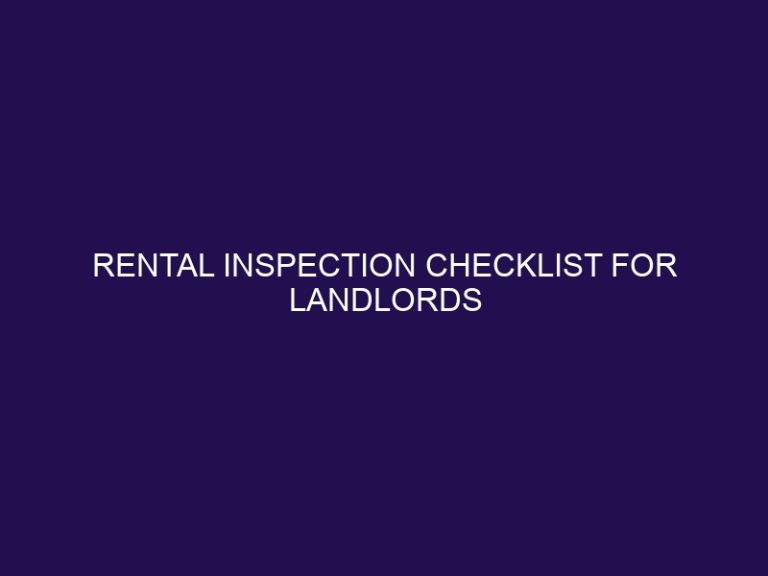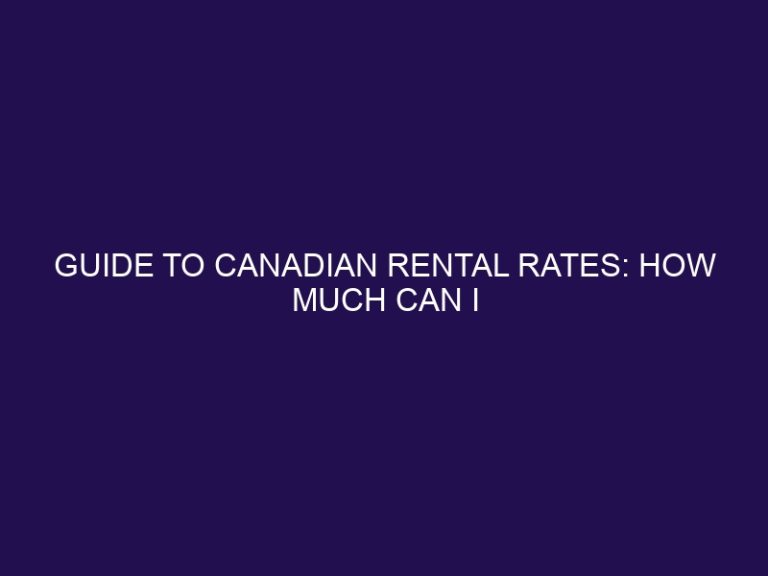The Ultimate Guide to subletting in Canada for renters & landlords
Subletting is a common practice in the rental market in Canada, benefiting both renters and landlords. It allows renters to temporarily rent out their space to another individual, known as a subletter, while they are away or have excess space. For landlords, subletting presents an opportunity to fill vacancies and generate additional income. However, navigating the subletting process successfully requires a good understanding of the rights, responsibilities, and legal aspects involved. Here is the ultimate guide to subletting in Canada for both renters and landlords.
Subletting for Renters
- Understanding the Subletting Process: Learn about the steps involved in subletting, including obtaining permission from the landlord, advertising the sublet, and conducting screenings.
- Finding a Sublet in Canada: Discover various methods to find suitable sublets, such as online platforms, local classifieds, or through personal networks.
- Rights and Responsibilities of Subletters: Familiarize yourself with the legal obligations and responsibilities that come with subletting, including rent payment, property maintenance, and adherence to tenancy laws.
- Tips for Negotiating Sublet Agreements: Learn effective negotiation techniques to ensure a fair and mutually beneficial arrangement with the subletter.
Subletting for Landlords
- Understanding the Legal Aspects of Subletting: Gain knowledge of the legal implications of subletting, including the landlord’s rights, obligations, and potential risks involved.
- Screening Potential Subtenants: Learn how to conduct thorough screenings to select reliable and responsible subtenants, including performing background checks and verifying references.
- Creating a Sublet Agreement: Understand the essential elements that should be included in a sublet agreement to protect the interests of both the landlord and the subletter.
- Collecting Rent and Managing Sublet Arrangements: Ensure a smooth subletting arrangement by establishing clear communication channels, collecting rent promptly, and handling any issues that may arise.
Important Considerations for Subletting in Canada
- Tenancy Laws and Regulations: Familiarize yourself with the specific tenancy laws and regulations in your province or territory to ensure compliance during the subletting process.
- Insurance and Liability: Understand the insurance implications and liability coverage for both renters and landlords when engaging in subletting arrangements.
- Types of Subletting Arrangements: Explore different types of subletting arrangements, such as fixed-term sublets or month-to-month agreements, to determine the most suitable option.
Tips for a Successful Subletting Experience
- Communication and Documentation: Maintain open and transparent communication with subletters, and document all agreements and discussions to avoid misunderstandings.
- Maintenance and Repairs: Clarify the responsibilities for property maintenance and repairs between the renter, subletter, and landlord to ensure a well-maintained living space.
- Ending a Sublet Agreement: Understand the proper procedures for ending a sublet agreement, including providing proper notice and conducting a proper move-out inspection.
By following this ultimate guide, both renters and landlords can navigate the subletting process in Canada smoothly and with confidence, ensuring a successful and mutually beneficial subletting experience.
Subletting for Renters
Looking to sublet in Canada? Dive into the world of subletting as a renter in this section. Discover the ins and outs of the process, uncover strategies for finding the perfect sublet, and gain valuable tips for negotiating sublet agreements. Find your ideal temporary home and make the most of your subletting experience in Canada. Let’s explore the world of subletting for renters together!
1. Understanding the Subletting Process
Understanding the subletting process involves several important steps:
- Review your lease agreement to ensure subletting is allowed.
- Notify your landlord in writing of your intent to sublet and provide the necessary details.
- Screen potential subtenants carefully to ensure they meet your criteria and are financially responsible.
- Create a sublet agreement that outlines the terms and conditions of the subletting arrangement.
- Collect rent from the subtenant and manage any maintenance or repair issues that may arise.
- Keep communication and documentation with your landlord and subtenant clear and organized throughout the process.
- When the subletting period is over, properly end the sublet agreement and notify your landlord of your intent to resume occupancy.
In 2021, John, a student studying abroad, subletted his apartment to Sarah while he was away. They followed the subletting process, signed an agreement, and maintained clear communication. The subletting arrangement was a success, allowing John to continue his studies while Sarah had a convenient place to live during her semester abroad.
2. Finding a Sublet in Canada
Finding a Sublet in Canada can be a daunting task, but with the right approach and utilizing various resources, it can become much easier. Here are some effective tips to help you successfully find a sublet in Canada:
- Start by networking and reaching out to your friends, colleagues, or classmates to see if they know of any available sublets. This way, you can tap into their connections and potentially find a suitable option.
- Check out online platforms and websites that are specifically designed for sublets in Canada, such as Craigslist or Kijiji. These platforms provide a wide range of options and allow you to filter your search based on your preferences.
- Another great way to find sublet opportunities is to join housing groups or forums on social media platforms. Landlords and tenants often post about sublet opportunities in these groups, making it a valuable resource to explore.
- Don’t forget to contact local universities or colleges as well. Many students who go away for the summer or a semester abroad are in need of tenants to occupy their apartments. By reaching out to the housing departments of these institutions, you can get more information about potential sublet options.
- Additionally, keep an eye out for advertisements or postings in community spaces such as grocery stores or community boards. Sometimes, people prefer to promote their sublets through these traditional methods, so it’s worth checking them regularly.
By considering these avenues, you can significantly increase your chances of finding a suitable sublet in Canada. So make sure to be proactive, utilize different resources, and keep an open mind during your search. Good luck!
Rights and Responsibilities of Subletters
Subletting in Canada offers a unique opportunity for both renters and landlords, but it’s essential to understand the rights and responsibilities involved. In this section, we will dive into the legal aspects of subletting, tips for screening potential subtenants, the importance of creating a comprehensive sublet agreement, and effective rent management techniques. So whether you’re a renter looking to sublet your space or a landlord navigating sublet arrangements, buckle up as we explore the ins and outs of subletting in Canada.
4. Tips for Negotiating Sublet Agreements
- Tips for Negotiating Sublet Agreements: When negotiating sublet agreements, it is crucial to carefully consider and effectively communicate with the subletter. Here are four tips to ensure a successful sublet agreement:
- Clear Expectations: To ensure a smooth subletting process, it is important to define the terms and conditions upfront. This includes specifying the duration of the sublet, rent amount, and any additional fees or responsibilities.
- Screening Process: Prior to finalizing a sublet agreement, it is essential to conduct thorough background checks and verify references of potential subletters. This step helps guarantee that the subletter is both reliable and responsible.
- Written Agreement: Creating a legally binding sublet agreement is vital. This agreement should clearly outline the rights and obligations of both the primary tenant and the subletter. It should cover aspects such as maintenance, utilities, and property access.
- Open Communication: Throughout the sublet period, it is crucial to establish open lines of communication. This allows for addressing any issues or concerns promptly, thereby preventing misunderstandings or disputes.
By following these tips for negotiating sublet agreements, both the primary tenant and subletter can navigate the subletting process smoothly and avoid any misunderstandings or disputes.
Subletting for Landlords
Subletting for landlords opens up a world of possibilities. Get ready to dive into the legal aspects, screening potential subtenants, creating agreements, and managing rent collections with this ultimate guide. Whether you’re a first-time landlord or a seasoned pro, this section will equip you with the knowledge and tools to navigate the subletting landscape in Canada like a pro. Stay tuned for essential tips and practices that will help you make the most out of your subletting journey.
1. Understanding the Legal Aspects of Subletting
Understanding the Legal Aspects of Subletting is essential for renters and landlords in Canada. Both parties should take the time to acquaint themselves with territorial, provincial, and local laws related to subletting. Renters should communicate their intentions to their landlord and formally request permission to sublet in writing. Similarly, landlords must grasp their rights and responsibilities, which include carefully screening potential subtenants and establishing a legally binding sublet agreement. Seeking professional advice and consulting the residential tenancy agency for specific information and guidelines is highly recommended for both renters and landlords. Acquiring a thorough understanding of the legal aspects of subletting enables both parties to navigate the process successfully while ensuring a seamless and lawful subletting experience.
2. Screening Potential Subtenants
When subletting a property in Canada, it is crucial to screen potential subtenants to ensure that responsible and reliable individuals occupy your space. Here are the steps to follow:
- Request Applications: Ask interested individuals to fill out an application form that includes their contact information, rental history, and references.
- Screening Potential Subtenants: Conduct background checks to verify their employment history, creditworthiness, and criminal record.
- Interviews: Set up interviews to get to know potential subtenants better. Ask questions about their lifestyle, expectations, and any specific requirements they have.
- Evaluate Conflict Resolution: Assess how the potential subtenants handle conflict or disputes to ensure peaceful coexistence with other tenants.
- Final Decision: Consider all the information gathered and make an informed decision about whether to accept or reject the potential subtenants.
Remember, it is essential to comply with all relevant provincial legislation and consult a professional advisor for guidance throughout the subletting process.
3. Creating a Sublet Agreement
Creating a Sublet Agreement involves several important steps to ensure a smooth and legally binding arrangement.
- Discuss and negotiate the terms of the sublet with the primary tenant, including the duration, rent amount, and any additional responsibilities.
- Review the existing lease agreement to understand any restrictions or requirements related to subletting.
- Draft the sublet agreement, including all relevant details such as the names and contact information of all parties, the start and end dates of the sublet, and the agreed-upon terms.
- Include clauses for rent payment, security deposit, and any additional fees or utilities that the subletter will be responsible for.
- Outline the responsibilities and expectations of both parties during the sublet period, including rules for maintenance, repairs, and any restrictions on the use of the property.
- Ensure that the sublet agreement complies with local laws and regulations, including any specific requirements for subletting in your jurisdiction.
- Have both parties review and sign the sublet agreement, indicating their understanding and acceptance of the terms.
- Provide each party with a copy of the signed agreement for their records.
4. Collecting Rent and Managing Sublet Arrangements
Collecting rent and managing sublet arrangements is a crucial aspect of subletting in Canada. To effectively handle this process, landlords can follow the following steps:
- Efficiently communicate payment terms and due dates to subtenants.
- Offer multiple payment options, such as online transfers or checks.
- Regularly follow up with subtenants to ensure timely rent payment.
- Maintain detailed records of rent payments and all relevant correspondence.
- Promptly and professionally address any late or missed payments.
- Adhere to provincial legislation when implementing rent increases and provide appropriate notice.
- Ensure that subtenants fully comprehend their responsibilities for property maintenance and repairs.
- Routinely inspect the property to ensure proper maintenance.
- Promptly address any concerns or issues raised by subtenants.
- Collect required documentation, such as proof of insurance, from subtenants.
By following these steps, landlords can effectively collect rent and manage sublet arrangements, creating a positive and financially stable rental experience for all parties involved.
Important Considerations for Subletting in Canada
Considering subletting in Canada? Before you dive in, it’s crucial to be aware of some important considerations. We’ll explore key areas that can make or break your subletting experience. From understanding tenancy laws and regulations to navigating insurance and liability, we’ve got you covered. Plus, we’ll shed light on the different types of subletting arrangements available. Get ready to arm yourself with the knowledge you need for a successful subletting journey in Canada.
1. Tenancy Laws and Regulations
Tenancy Laws and Regulations play a vital role in governing the subletting process in Canada, ensuring the protection and rights of both tenants and landlords. It is crucial to have a comprehensive understanding of these laws before considering or participating in any subletting arrangements. Several key areas require consideration, including familiarity with territorial and provincial legislation, adherence to local municipal housing standards, and knowledge of guidelines set by residential tenancy agencies. Both tenants and landlords should be fully aware of their rights and responsibilities, which encompass activities such as thoroughly screening potential subtenants, drafting detailed sublet agreements, and ensuring proper rent collection. By comprehending and adhering to these Tenancy Laws and Regulations, both parties can have a successful subletting experience that is legally sound and in compliance with the law.
2. Insurance and Liability
Insurance and liability are crucial factors to consider when subletting in Canada. It is important to have adequate protection for both renters and landlords. Here are some essential points to keep in mind:
- Understand the insurance requirements: Take the time to check if your current insurance policy covers subletting, or if you need to obtain additional coverage.
- Discuss liability with the primary tenant: Determine who will be responsible in the event of damage or accidents during the sublet period.
- Carefully review the lease agreement: Ensure that the sublet arrangement is allowed, and that the provisions for insurance and liability are clearly outlined.
- Notify your insurance provider: Make sure to inform your insurance company about the sublet, so they can offer guidance on coverage and any necessary adjustments.
- Require insurance from subtenants: It is advisable to make it mandatory for subtenants to have their own renter’s insurance to provide additional protection.
- Consult with legal and insurance professionals: Seek advice from experts in the field to gain a full understanding of your rights, obligations, and the most effective approach to addressing insurance and liability concerns.
3. Types of Subletting Arrangements
When it comes to subletting, there are different types of arrangements that both renters and landlords should be aware of:
- 1. Complete Sublet: In this arrangement, the primary tenant vacates the premises and transfers the lease to the subtenant for the remaining duration.
- 2. Partial Sublet: Here, the primary tenant sublets a portion of the rental unit while still residing in the property.
- 3. Roommate Sublet: This type involves the primary tenant subletting a room or a shared space within the rental unit to another individual.
It’s essential to understand the specific requirements and legal implications associated with each subletting arrangement to ensure a smooth and compliant process.
Sarah subletted her extra room to David for six months while she was studying abroad. They had a roommate subletting arrangement, which helped Sarah cover a portion of her rent while providing David with an affordable place to live in the city.
Tips for a Successful Subletting Experience
Looking to sublet in Canada? Get ready for a successful experience with these insider tips. From effective communication and proper documentation to smooth maintenance and repairs, we’ve got you covered. And when it’s time to end the sublet agreement, we’ll guide you through the process. So, whether you’re a renter or a landlord, read on to discover the secrets of a seamless subletting journey in Canada.
1. Communication and Documentation
Effective communication and documentation are crucial for a successful subletting experience in Canada.
- Establish clear communication channels: Maintain open lines of communication with the primary tenant, potential subtenants, and the landlord.
- Keep records of all communication: Document everything, including written requests, agreements, and notices.
- Comply with legal requirements: Ensure that all subletting agreements and notices adhere to provincial legislation.
- Get everything in writing: Document all agreements, changes, and extensions in writing to avoid any misunderstandings.
- Share contact information: Provide accurate contact information to all parties involved for easy communication.
Sarah successfully sublet her apartment in Toronto while studying abroad. She maintained regular communication with her subtenant, documented all agreements, and informed her landlord in writing. This ensured a smooth subletting experience and a hassle-free transition back into her apartment when she returned.
2. Maintenance and Repairs
- Regular maintenance and repairs: Take proactive steps to maintain the property, such as cleaning, changing filters, and addressing minor repairs.
- Report maintenance and repair issues promptly: Notify the landlord or property manager of any maintenance or repair needs as soon as they arise.
- Document maintenance and repairs: Keep a record of all maintenance and repairs done on the property, including dates, details, and any communication with the landlord.
- Follow lease guidelines for maintenance and repairs: Adhere to any maintenance and repair requirements outlined in the lease agreement.
- Communicate with the landlord about maintenance and repair concerns: Keep the landlord informed about any ongoing maintenance or repair concerns and collaborate on finding solutions.
- Seek professional help if necessary for maintenance and repair: If you lack the skills or tools to handle a maintenance or repair issue, contact a qualified professional for assistance.
- Respect property rules for maintenance and repairs: Follow any rules or guidelines provided by the landlord regarding maintenance and repairs.
3. Ending a Sublet Agreement
- Ending a sublet agreement: Ending a sublet agreement requires careful planning and adherence to legal procedures. Here are some steps to follow:
- Review the terms: Familiarize yourself with the termination clauses in the sublet agreement.
- Provide notice: Give the required notice period specified in the agreement, usually 30 days, to inform the primary tenant of your intention to end the sublet.
- Document the condition: Conduct a final walkthrough of the rental unit with the primary tenant to document any damages or issues.
- Return the keys and settle payments: Return all keys to the primary tenant and settle any outstanding payments, such as rent or utilities.
Pro-tip: Keep communication lines open with the primary tenant throughout the process to ensure a smooth and amicable termination of the sublet agreement.
Frequently Asked Questions
FAQs for The Ultimate Guide to Subletting in Canada for Renters & Landlords
1. Can I sublet my apartment if I have a primary lease agreement?
Yes, if you have a primary lease agreement, you can sublet your apartment by renting it out to another person, known as a subtenant. However, you must seek the landlord’s consent and comply with local laws and regulations.
2. What should I do if I want to rent out my apartment before my lease ends?
If you want to rent out your apartment before your lease ends, you can consider subletting it. By finding a subtenant, you can temporarily transfer your lease agreement to them, allowing you the freedom of movement while still being responsible for the property.
3. What are the rights of renters regarding property standards and safety?
Renters in Canada have the right to safe and livable building conditions. Landlords are obligated to comply with building codes and housing standards to provide tenants with a safe and habitable living space.
4. What are the tenant’s rights in case of landlord disputes?
If you encounter any disputes or issues with your landlord, it is crucial to understand your rights as a tenant. Tenant rights in Canada are protected by provincial and territorial legislation, as well as human rights laws. It is advisable to seek legal advice and take necessary actions to resolve the dispute.
5. Can I sublet my apartment if I plan to study abroad or pursue a job opportunity in another city?
If you plan to study abroad or have a lucrative job opportunity in another city, subletting can be a suitable option for you. By finding a subtenant, you can temporarily sublet your apartment while you are away, ensuring that your lease agreement is maintained.
6. How do I request to sublet my apartment?
To request to sublet your apartment, you should consult your primary lease agreement and landlord for their approval. It is essential to follow proper procedures, such as providing notice of your intent to vacate and finding a qualified subtenant. By completing the necessary paperwork and due diligence, you can proceed with the subletting process.







